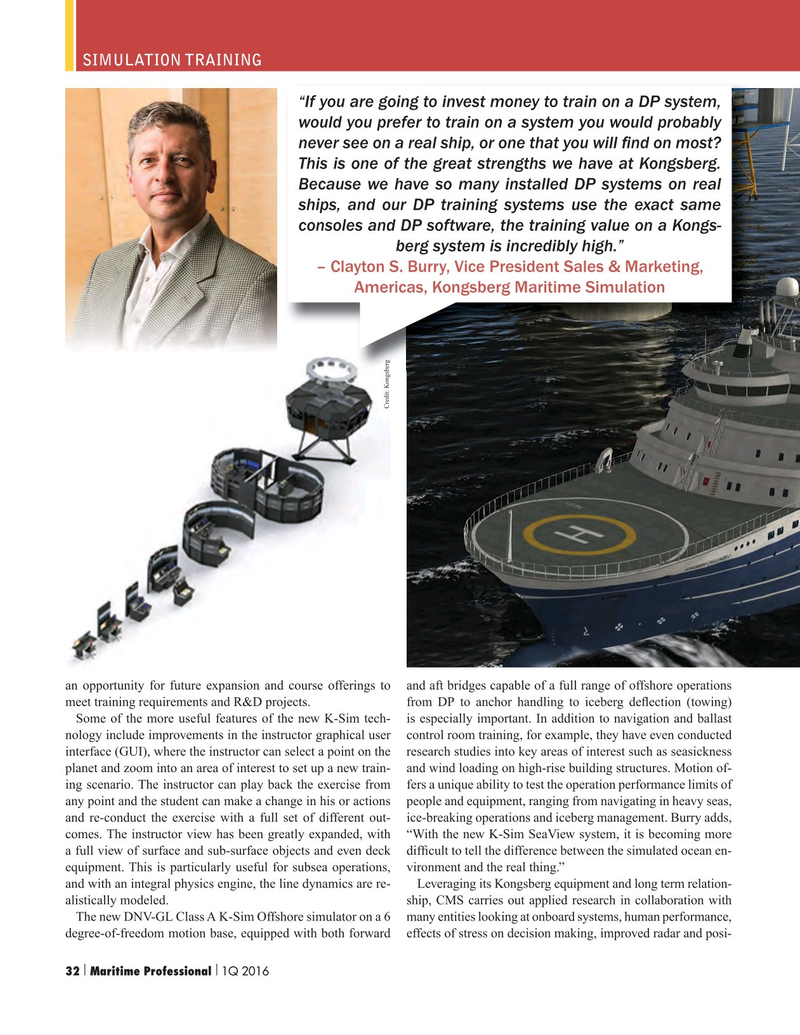
Page 32: of Maritime Logistics Professional Magazine (Q1 2016)
Maritime Training and Education
Read this page in Pdf, Flash or Html5 edition of Q1 2016 Maritime Logistics Professional Magazine
SIMULATION TRAINING “If you are going to invest money to train on a DP system, would you prefer to train on a system you would probably never see on a real ship, or one that you will ? nd on most?
This is one of the great strengths we have at Kongsberg.
Because we have so many installed DP systems on real ships, and our DP training systems use the exact same consoles and DP software, the training value on a Kongs- berg system is incredibly high.” – Clayton S. Burry, Vice President Sales & Marketing,
Americas, Kongsberg Maritime Simulation
Credit: Kongsbergberg an opportunity for future expansion and course offerings to and aft bridges capable of a full range of offshore operations meet training requirements and R&D projects. from DP to anchor handling to iceberg de? ection (towing)
Some of the more useful features of the new K-Sim tech- is especially important. In addition to navigation and ballast nology include improvements in the instructor graphical user control room training, for example, they have even conducted interface (GUI), where the instructor can select a point on the research studies into key areas of interest such as seasickness planet and zoom into an area of interest to set up a new train- and wind loading on high-rise building structures. Motion of- ing scenario. The instructor can play back the exercise from fers a unique ability to test the operation performance limits of any point and the student can make a change in his or actions people and equipment, ranging from navigating in heavy seas, and re-conduct the exercise with a full set of different out- ice-breaking operations and iceberg management. Burry adds, comes. The instructor view has been greatly expanded, with “With the new K-Sim SeaView system, it is becoming more a full view of surface and sub-surface objects and even deck dif? cult to tell the difference between the simulated ocean en- equipment. This is particularly useful for subsea operations, vironment and the real thing.” and with an integral physics engine, the line dynamics are re- Leveraging its Kongsberg equipment and long term relation- alistically modeled. ship, CMS carries out applied research in collaboration with
The new DNV-GL Class A K-Sim Offshore simulator on a 6 many entities looking at onboard systems, human performance, degree-of-freedom motion base, equipped with both forward effects of stress on decision making, improved radar and posi- 32 Maritime Professional 1Q 2016| | 18-33 Q1 MP2016.indd 32 2/29/2016 10:47:17 AM

 31
31

 33
33
